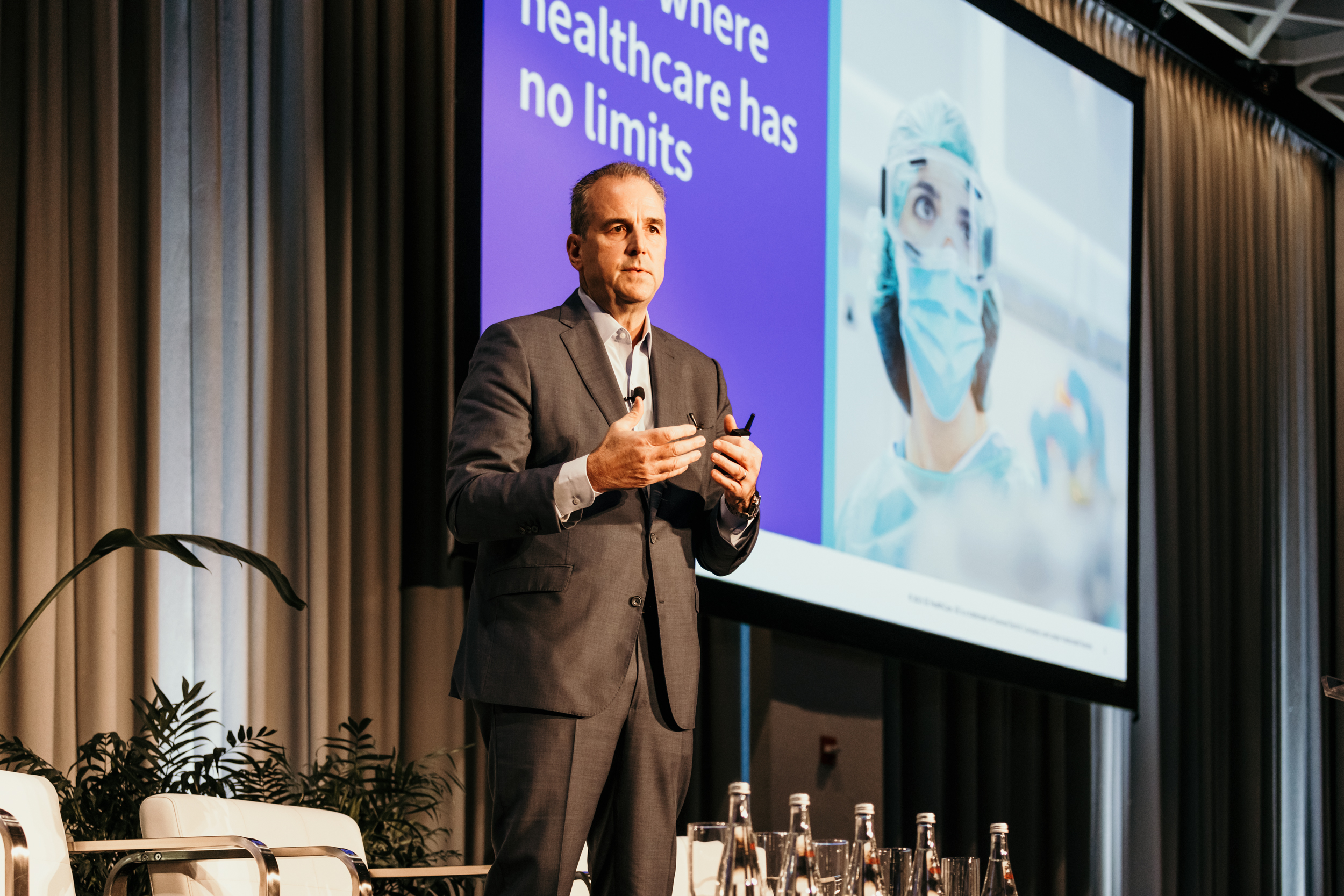By Peter Arduini, President and CEO of GE HealthCare
Heart disease, Alzheimer’s, and cancer: three of the most prevalent diseases today. Cardiovascular diseases such as atrial fibrillation, which can lead to stroke, are the leading causes of death worldwide, with cancer not far behind and on the uptick among younger people. Meanwhile, as populations age, cases of dementia are expected to grow to 139 million by 2050, from around 55 million today.
All these diseases present major challenges to our society, creating a cost burden for patients and stress on our healthcare systems. After decades of struggle, medicine is responding with new therapies that could, over time, have a dramatic impact on diagnosis and treatment and, in some cases, even cure diseases. But these new treatments, such as immunotherapies for cancer and monoclonal antibodies for the treatment of Alzheimer’s disease, come with their own challenges: They often, for example, require precise diagnostic imaging to help identify qualifying patients and to track disease progression and potentially serious adverse effects. Not all health systems are ready to meet this rising demand.
Healthcare is entering a new age in which diagnosis and treatment can increasingly be tailored to patients’ genetic profiles and lifestyle choices. Precision care is a young discipline, with a bright future — a future that can help clinicians identify effective therapies based on an individual patient’s profile and delivered at a sustainable cost for health systems, while reducing the administrative burden on clinicians.
Take Alzheimer’s disease. New therapies offer a glimmer of hope to patients and their families, but they depend on accurate and early diagnosis of amyloid plaques in the brain. PET imaging with an accompanying amyloid imaging agent can help detect and visualize the extent of amyloid in the brain, but until recently the U.S. Medicare program covered an amyloid PET scan only when a patient was enrolled in a CMS-approved coverage with evidence development study (CED), which limited patient access to novel treatments. Thankfully, CMS moved quickly to amend this requirement in October 2023. The change could open access to amyloid PET imaging for patients in the U.S. With regulatory approvals for new therapies to slow the progression of Alzheimer’s disease pending in many other parts of the world, we’re hopeful that access to amyloid PET imaging will be addressed swiftly in other regions, too.
With cancer, immunotherapies can trigger the human immune system to recognize and attack tumors. They can be more effective than traditional treatments, but with a downside: Response rates are sometimes low, and side effects can be severe. To identify which patients will be more likely to respond to treatment without adverse reactions, GE HealthCare and our partners turned to AI.
In a recent study on a pan-cancer cohort of 7,000 de-identified immunotherapy patients from Vanderbilt University Medical Center and the University of Essen, Germany, AI models trained to analyze routinely acquired data were found to predict efficacy outcomes and the likelihood of an individual patient developing an adverse reaction with 70% to 80% accuracy.
In parallel, a new 18F-CD8 positron emission tomography (PET) radiotracer our company is developing has the potential to identify patients more likely to respond to immunotherapies, helping to avoid treatments that may not be effective. This would enable physicians to consider alternative treatment options.
These cases illustrate how quickly healthcare is changing, with clinicians combining advanced imaging and data from across a patient’s care journey to identify disease earlier and create more personalized treatment plans. This new personalized approach to medicine holds tremendous promise but also presents a major challenge as the number of patients increases, each requiring more tests, imaging, and labs, which creates more healthcare data. Today’s healthcare providers are inundated with data from these multiple sources. The typical hospital produces 50 petabytes of data a year, more than in the entire collection of the Library of Congress. Too often this abundance of information makes life more difficult for caregivers, requiring time and brainpower to manage, review, and interpret the data to glean new insights.
Healthcare remains fragmented and siloed, with many manual processes, bolt-on technology solutions, and a one-size-fits-all approach to patient care. Healthcare providers are burned out and systems are challenged to prepare for a significant increase in patients due to an aging population and increased disease incidences. The people caring for patients — caregivers, providers, and health systems — are desperate to change this.
For example, 99% of clinicians we surveyed from around the world agreed that patients and care teams should be more intimately linked via technology, and more than half said they do not have enough time and resources to care for patients and patients' families. It’s clear that technology must make providing care easier rather than creating more work.
Our goal is to enable precision care with technology, research, collaborations, and advocacy. This is why we’re aiming to develop a single-pane-of-glass digital tool to make sense of all this data — whereby clinicians can easily visualize longitudinal multimodal patient data across care settings (EMR, imaging scans, lab results, protocols, etc.) to help them assess trends and events in the care pathways of their patients. We’re collaborating with organizations like the Mayo Clinic to help advance cutting-edge imaging techniques so they get to patients faster. We also continue to build on a heritage of innovation and bring to market new technologies and products that enable clinicians to detect and treat diseases more effectively.
Patients and clinicians are asking for a more human and flexible future. GE HealthCare, our partners, and the healthcare industry as a whole must work together to deliver on this promise.

